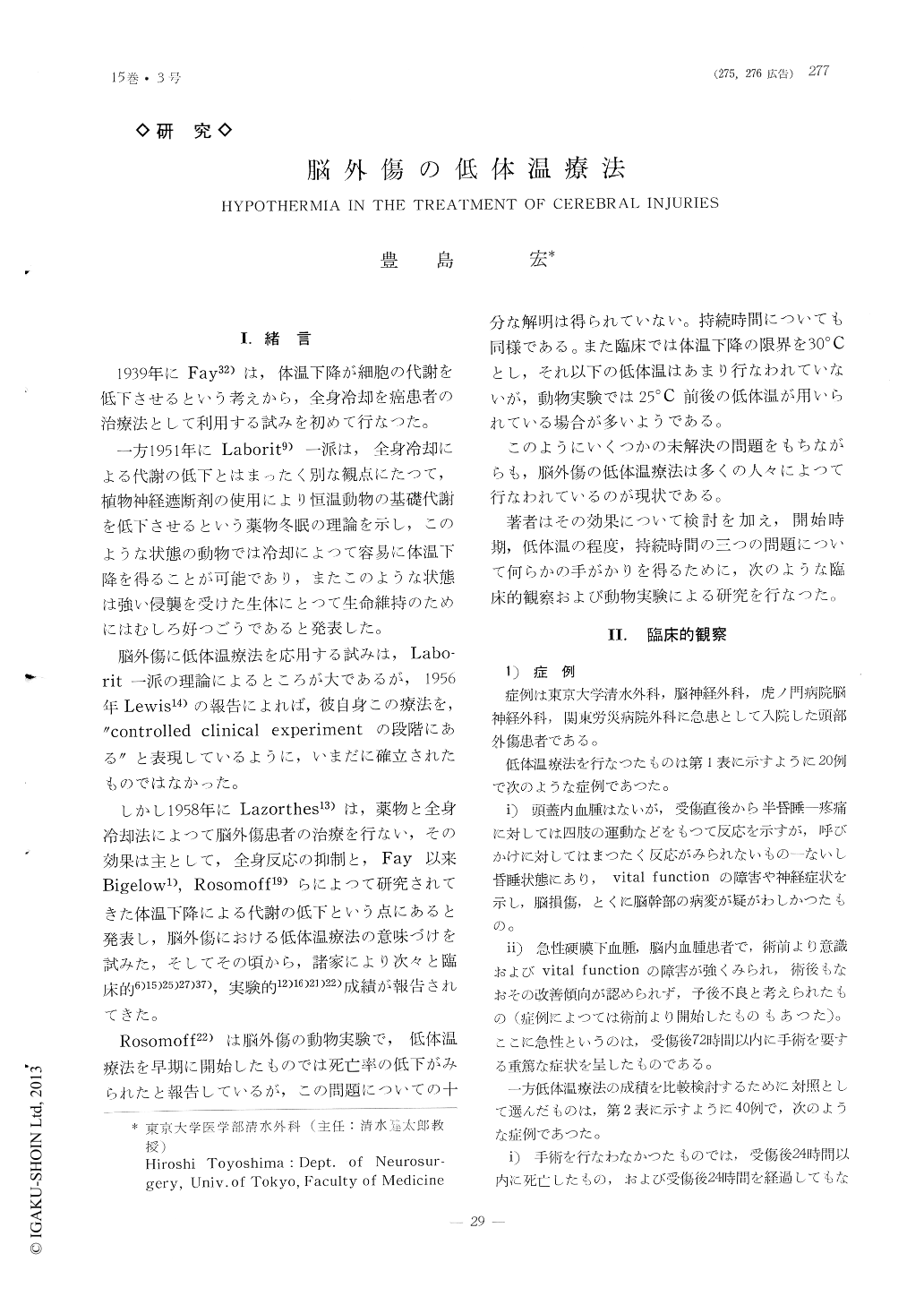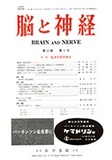Japanese
English
- 有料閲覧
- Abstract 文献概要
- 1ページ目 Look Inside
I.緒言
1939年にFay32)は,体温下降が細胞の代謝を低下させるという考えから,全身冷却を癌患者の治療法として利用する試みを初めて行なつた。
一方1951年にLaborit9)一派は,全身冷却による代謝の低下とはまったく別な観点にたつて,植物神経遮断剤の使用により恒温動物の基礎代謝を低下させるという薬物冬眠の理論を示し,このような状態の動物では冷却によつて容易に体温下降を得ることが可能であり,またこのような状態は強い侵襲を受けた生体にとつて生命維持のためにはむしろ好つごうであると発表した。
1) The author investigated the effect of therapeutic hypothermia upon cerebraltrau-matism.
2) Animal experiments revealed the fact that it reduced mortality of traumatized rats only when it was started within two and a half hours aftertrauma and this effect could not be expected when it was started later than five and a half hours.
If it was commenced within two and a half hours, the effect was not much influenced either by degree or duration of hypothermia.
From the anatomical point of view, hypo-thermia could save rats with contusion ofthe limbic cortex which was fatal for control ones.
Body temperature of control rats reached its maximum value from about three to five hours after trauma and histologically, seco-ndary reactions arround cerebral contusion appeared at about the same time. It was though that hypothermia should be started before these general and local reactions bec-ome severe.
3) Clinically, hypothermia reduced mortality rate of severe head injury cases from 62.59 of crude control to 35%. This effect, however, was almost restricted to cases accompanied by such sympathetic reactions after cerebral traumatism as high fever, tachypnea, tachy-cardia and labile high blood pressure.
It is concluded that if these generalreacti-ons are blocked by lytic cocktail and mildhy-pothermia soon after their appearance, short hypothermia of about twelve-hour-duration will show the above mentioned effects and prolonged hypothermia will nothe necessarily needed.

Copyright © 1963, Igaku-Shoin Ltd. All rights reserved.


